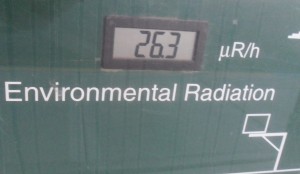“Cosmetics were very expensive back then, and a single product could cost the equivalent of a month’s salary for many office ladies.”-Chen Linlin, L’Oréal China
Linlin is talking about the not so good economic decade of the 1930s, but it looks like history is repeating for people (in North America and Europe) who just have to have makeup.
Back on 4 July 2011, I posted how Estee Lauder Group was the first cosmetic company to jack up their prices, and that it would be a trend for the whole industry.
Recently a Forbes article showed that Estee Lauder and L’Oréal are making bank in the Chinese market. China’s internet cosmetics market is now nine times bigger than that of the United States, a 200% increase since 2006!
Last year cosmetics makers claimed that labor costs, and the costs of resources were the reasons for price increases. Now, with China draining the supply of cosmetics, demand will ensure that prices will continue to go up.
Don’t blame China only, blame South America! According to a NASDAQ report, the biggest market place for Avon (AVP) products is not the home base of the United States, but South America!
But, the NASDAQ report inadvertently reveals a couple of hidden reasons for the increase in your makeup prices: “AVP has turned its toehold in Latin America into a $1 billion-a-quarter business by spending a fortune on marketing and retailer incentives — if not the outright ‘bribes’ it is accused of distributing in Asia.”
However, when it comes to cosmetics that’re supposed to stop aging, it’s vain women in the United States that still take first place when it comes to anti-aging skin care products.
According to the research company, Mintel, the anti-aging skin care market in the U.S. leads the world with $2.3 billion USD in 2011 sales!
But it doesn’t stop with makeup. One of my daughters told me that the shampoo she uses is now $2.00 USD more than it was a couple of years ago.
According to reports, the booming economy in India is creating a huge demand for personal care products that most rural people in India didn’t have access to: “In the past we used to use sticks or cow dung ash to clean our teeth. But now, just like urban people, we use a toothbrush and toothpaste. We use shampoo and expensive oils and creams. We have everything in our village that people have in towns and cities.”-Arun Mondal, a rural villager
In Canada the demand for body soap that does not contain harsh fragrances, therefore more environmentally friendly, has a Canadian soap manufacture scrambling and expanding into the retail market.
Paul Gillepsie, owner of Island Essentials wholesale, has so much business that he’s opened a retail store in Victoria, and will expand into Alberta. In 2004 his soap products were carried in 150 Canadian stores, now they’re sold in more than 250 stores.
But can we blame rising prices on rising demand in countries like Canada, China, India, and the countries of South America, and our own United States?
According to the U.S. Bureau of Labor Statistics, the cost to U.S. consumers of personal care products has been skyrocketing ever since the 1960s! In the 1960s, the Consumer Price Index (CPI) for personal care products was just under 40. Now, in 2012, it’s at 161 and climbing.
However, looking at the Producer Price Index (PPI), aka U.S. wholesale prices, shows that costs of intermediate goods (which are necessary for production of finished goods) have gone down from January 2011 to January 2012!
Intermediate goods were at 6.2% in January 2011, and were at 4.2% by January 2012, a 2% drop. The cost of finished goods were at 3.6% in January 2011, but 12 months later were at 4.1% in January 2012, a half percent increase.
What’s important in the January to January comparison is what happened in the middle of 2011. The costs of intermediate goods pegged at 11.5% in July 2011! For finished goods the costs hit 7.1% twice, once in May and once in July 2011.
The spikes in intermediate and finished goods mirrors the cost of raw materials (aka crude materials). Overall, raw materials began January 2011 at 10.9%, and ended the year down more than 6%, at 4.5% in January 2012. Again, the real killer was the spike in costs in the middle of 2011, topping out at 26.1% in June!
We in the United States are still paying for those spikes in the production costs of making the personal care products we can’t be without (cow dung for toothpaste anyone?). However, the overriding decider of retail costs is still demand for such products, which seems to increase year after year, exponentially.
